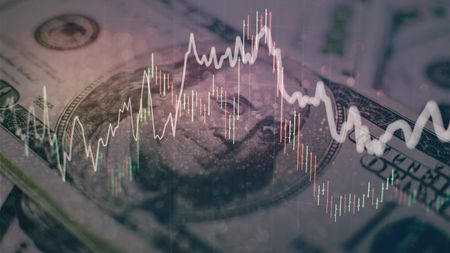How the Federal Reserve's Decision to Hold Rates Steady Affects Your Savings
We explore how the Federal Reserve's decision to maintain interest rates impacts your savings strategy.

Carla Ayers
Typically, when the Fed raises interest rates, banks increase the yields on savings accounts to attract deposits. Conversely, rate cuts often lead to reduced returns for savers. With the Fed keeping rates steady, the interest rates on savings accounts are expected to remain relatively stable in the short term.
The Federal Reserve's recent decision to maintain interest rates between 4.25% and 4.50% means that high-yield savings accounts (HYSAs) and certificates of deposit (CDs) will likely continue to offer attractive annual percentage yields (APYs), with some exceeding 4%. For example, Axos Bank currently offers a HYSA with an APY of 4.86%. This is great news for savers looking to maximize their returns.
While the Federal Reserve has currently paused rate changes, future decisions will depend on economic indicators such as inflation, employment data and the impact of recent trade policies.

Sign up for Kiplinger’s Free E-Newsletters
Profit and prosper with the best of expert advice on investing, taxes, retirement, personal finance and more - straight to your e-mail.
Profit and prosper with the best of expert advice - straight to your e-mail.
Should the Fed decide to cut rates in the future, yields on savings accounts may gradually decline.
Still, if you don't already have one, it's worth opening a high-yield savings account despite the next Fed meeting, so you can take advantage of high rates before they significantly fall. Even though rates are lower, there are still higher returns for your cash in high-yield savings accounts than sitting in an average checking or savings account.
Another option, which can help you avoid falling rates completely, is to open a CD account. Since the APY on a CD account is fixed, if you lock up your cash in one now, you won't have to worry about your APY going down until the CD matures. Just make sure you're comfortable with not being able to access your cash until the account matures.
The Fed's impact on savings rates
Beginning in March 2022, the Federal Reserve initiated a series of 11 interest rate hikes to combat soaring inflation, which peaked at 9.1%. This aggressive monetary tightening elevated the federal funds rate to a target range of 5.25% to 5.50%, marking the highest level in 23 years.
However, as inflationary pressures began to subside, the Federal Reserve shifted its stance, opting to hold interest rates steady in the first quarter of 2025. This pause in rate hikes led to a stabilization, and in some cases, a slight decline in savings rates. Financial institutions adjusted their offerings accordingly, with some reducing the APYs on their savings products.
Looking ahead, if the Federal Reserve moves to cut interest rates in response to cooling inflation, savers can anticipate further decreases in the yields of HYSAs and CDs. To optimize returns in a shifting economic landscape, it's important to stay informed. By regularly comparing offerings from various financial institutions, savers can adjust their strategies effectively to maintain favorable returns.
You can compare savings rates for both high-yield savings accounts and CDs below.
Related Content
Get Kiplinger Today newsletter — free
Profit and prosper with the best of Kiplinger's advice on investing, taxes, retirement, personal finance and much more. Delivered daily. Enter your email in the box and click Sign Me Up.

Erin pairs personal experience with research and is passionate about sharing personal finance advice with others. Previously, she was a freelancer focusing on the credit card side of finance, but has branched out since then to cover other aspects of personal finance. Erin is well-versed in traditional media with reporting, interviewing and research, as well as using graphic design and video and audio storytelling to share with her readers.
- Carla AyersE-Commerce & Personal Finance Editor
-
 Stock Market Today: Stocks Are Mixed Before Liberation Day
Stock Market Today: Stocks Are Mixed Before Liberation DayMarkets look forward to what comes with the reordering of 80-year-old global trade relationships.
By David Dittman Published
-
 Stagflation: What It Is and Why Retirees Should Care
Stagflation: What It Is and Why Retirees Should CareStagflation — the economic bogeyman of the 1970's — may return to the US. Here's what it could mean to your retirement.
By Donna Fuscaldo Published
-
 Stock Market Today: It's the Old Up-Down Again on Liberation Day
Stock Market Today: It's the Old Up-Down Again on Liberation DayMarkets look forward to what comes with the reordering of 80-year-old global trade relationships.
By David Dittman Published
-
 Can a New Manager Cure Vanguard Health Care Fund?
Can a New Manager Cure Vanguard Health Care Fund?Vanguard Health Care Fund has assets of $40.5 billion but has been ailing in recent years. With a new manager in charge, what's the prognosis?
By Nellie S. Huang Published
-
 Empower Review: Is This Financial Hub the Right Tool for You?
Empower Review: Is This Financial Hub the Right Tool for You?Empower offers you a way to see all your financial accounts and set savings goals in one digital hub.
By Sean Jackson Published
-
 See How Much Auto Tariffs Could Raise Your Car Insurance Rates
See How Much Auto Tariffs Could Raise Your Car Insurance RatesPresident Donald Trump issued a 25% tariff on all car imports. See how this tariff impacts the cost of your car insurance.
By Sean Jackson Published
-
 What You Don't Know About Annuities Can Hurt You
What You Don't Know About Annuities Can Hurt YouLack of awareness leads many to overlook these potent financial tools, and with the possibility of running out of money in retirement, that could really hurt.
By Ken Nuss Published
-
 Three Keys to Logical Investing When Markets Are Volatile
Three Keys to Logical Investing When Markets Are VolatileFocusing on these market fundamentals can help investors stay grounded rather than being swayed by emotion or market hysteria.
By Dennis D. Coughlin, CFP, AIF Published
-
 Yes, the Markets Are Spooked, But You Don't Have to Be
Yes, the Markets Are Spooked, But You Don't Have to BeIt's human nature for investors to freak out in a downturn. But with a little discipline, you can overcome the urge to sell and stay focused on long-term goals.
By Jimmy Lee, IAR Published
-
 Remembering Bogle: A New Standard for Municipal Investing
Remembering Bogle: A New Standard for Municipal InvestingImprovements in technology, data, systematic trading and risk analytics have led to more successful municipal indexing.
By Paul Malloy Published